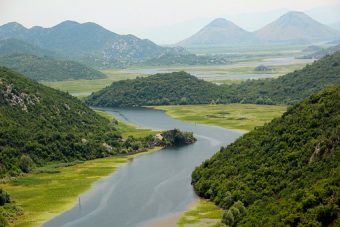
Estuaries are places where freshwater river and saltwater marine ecosystems meet. They are important for biodiversity, as they are home to many species of plants and animals that have adapted to the unique environment, which is why you can find shore-nesting fish and birds in the estuaries.
Osmosis is a key process that occurs in estuaries. This process occurs when water passes through a semi-permeable membrane from an area of lower salt concentration to an area of higher salt concentration, trying to equalize the salt balance. This means that when fresh water from the river flows into the salt water of the estuary, the water tends to the areas with higher salt content. This natural phenomenon creates pressure that can be used to produce energy, not just any kind, but completely clean and environmentally friendly.
Scientists have recognized the potential of osmosis as a source of renewable energy, as it can be used to generate electricity, however, to achieve this, they have developed special membranes that allow water to pass through, but retain salt and other particles. A key part of this process is controlling the flow of ions and electrons through the membrane. The more permeable the membranes are to ions and the lower the resistance, the greater the potential for energy generation.
More:
- EU ROOFTOP SOLAR STANDARD ALONE COULD SOLAR POWER 56 MILLION HOMES
- ROMANIA ADOPTS OFFSHORE WIND LAW
- DENMARK’S LATEST OFFSHORE WIND AUCTION COULD AWARD ENOUGH CAPACITY TO MEET THE COUNTRY’S ENTIRE ELECTRICITY DEMAND
American Chemical Society researchers have shared research data obtained after developing a prototype of an innovative RED (reverse electrodialysis) membrane that enables more efficient energy production. These membranes are designed with separate channels for ion and electron transport, which reduces internal resistance and increases permeability. In laboratory tests, these membranes have shown excellent performance, giving more than twice the power density of commercial membranes, thanks to the separate channels. This success hints that osmosis energy could become one of the options for energy production in the future.
The first osmotic power plant was launched in Norway in 2009 on the coast of the Oslofjord. Although this was an experimental project, it demonstrated the potential of osmotic energy as a renewable energy source.
Such projects are not without challenges that curb the wider application of osmotic energy. Membrane production costs are high, system efficiency varies and membrane durability can be problematic. However, interest in osmotic energy is growing, as scientists continue to explore ways to improve efficiency and reduce costs, which could make osmotic power plants competitive in the future.
Energetski portal



